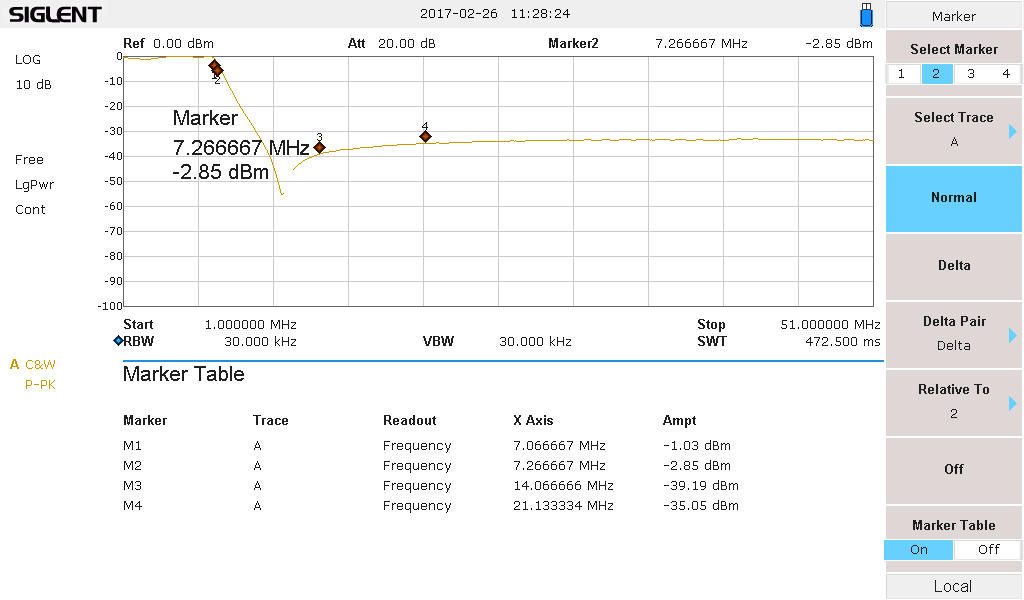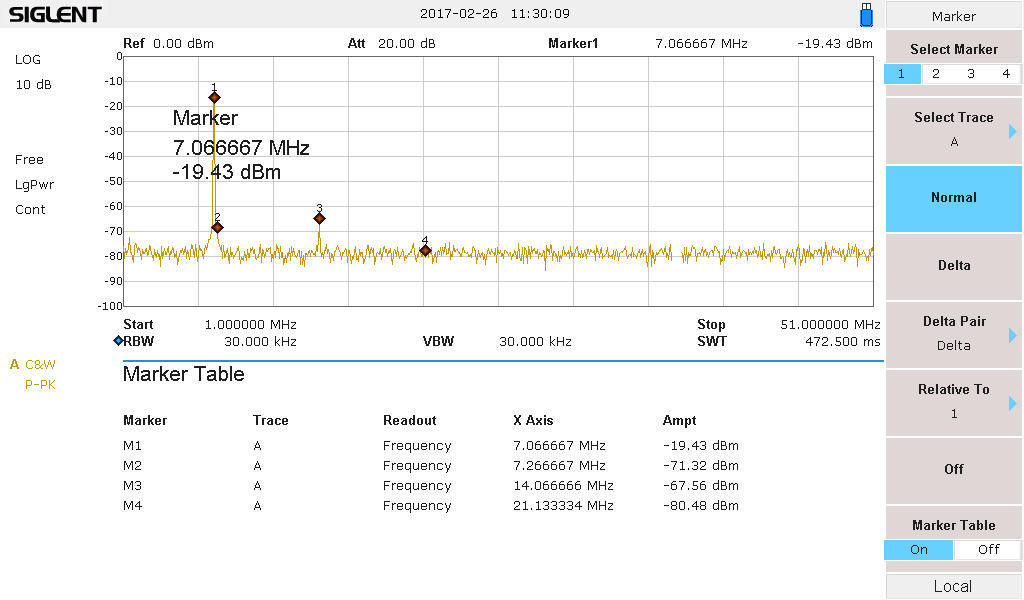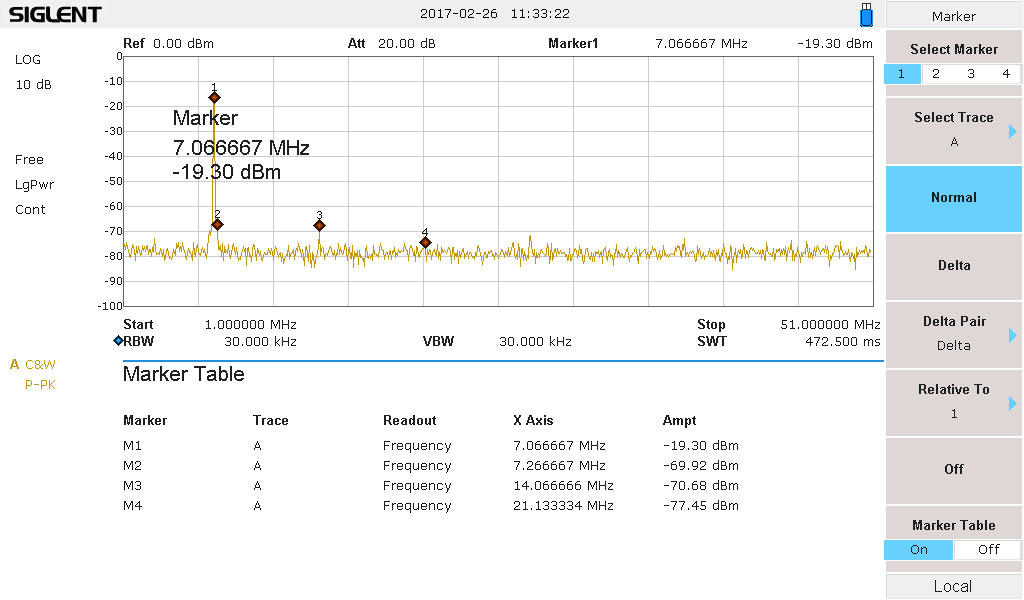Yesterday I replaced the inductors in my original 40-meter LPS with larger cores that wound up having about twice the Q. This morning I replaced the ceramic caps with silver mica caps. The old caps had a Q around 80. The new caps have a Q > 1000. As one might expect this had an impact on the insertion loss of the filter, lowering it by almost a full db from -1.97 down to -1.03 dB. The tighter cap tolerances also resulted in a cutoff frequency of 7.26 MHz, probably a bit too close to the operating frequency. Rejection at the 2nd harmonic was -39.2, and at the 3rd harmonic was -35.0 dB.
Actual transmit performance using my original S8050 transistor (which had 2nd harmonic suppression of -10 dB) had a 2nd harmonic suppression of -51.9 dB.
| Ceramic Caps | Silver Mica Caps | |
| Meter Power | 270 mW | 240 mW |
| 7.040 MHz | -16.7 dBm | -19.4 dBm |
| 14.08 MHz | -61.6 dBm | -71.3 dBm |
| 21.12 MHz | <-80.0 dBm | < -80 dBm |
Note that the measured meter output power was 240 mW, which is down about 30 mW from the ceramic cap solution. The SA indicated the fundamental was at +20.6 dBm or 115 mW). Given the lower insertion loss, I suspect this is because the filter with the SM caps and T50-2 toroids is providing a sub-optimal impedance match to the output transistor.
Putting the 2N2219 transistor in the circuit boosted the output power up to almost 280 mW by the meter, with a 120 mW fundamental by the SA., and a second harmonic suppression of -50.6 dB.











